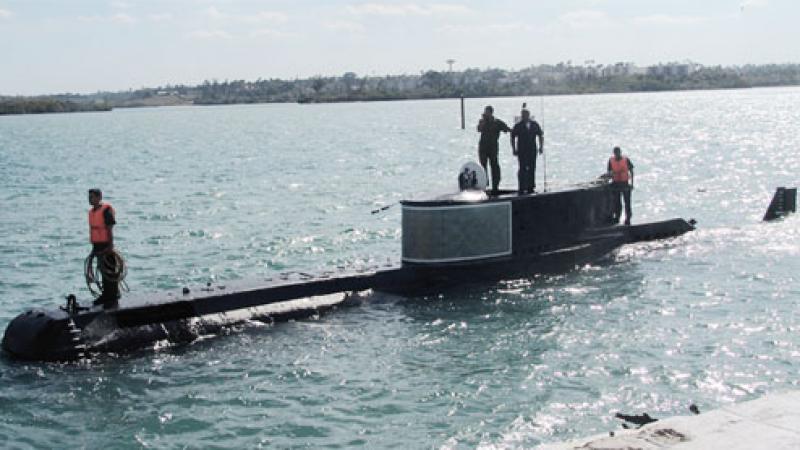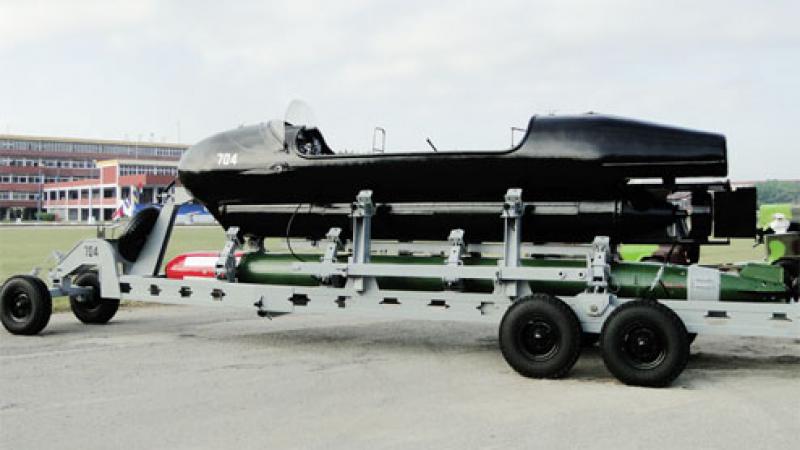
Like most of the Cuban military, the country’s Navy is characterized by inventive recycling of Soviet-era hardware. Modern systems are rare, but there are systems that are unlike anything you will see in other countries’ fleets. The Cuban fleet has fishing trawlers remodeled into warships and torpedo launching platforms that resemble party rafts. But perhaps the most dangerous platform is Cuba’s secretive, tiny submarine.
The single submarine is known as Delfín. It can be found in commercial satellite imagery going back at least as far as April 2008. A few candid photographs have emerged over the years, but it has not been showcased publicly until recently.
The Cuban Navy has been very secretive about the mere existence of this submarine. In more than ten years of service, Delfín was only shown in an official video this year. Now the guard has come down even further and a clear photograph of this unique submarine has been added to their official website.
Delfín is a small boat – about 70 feet (21 meters) long. It has a crew of 5 or more and is armed with heavyweight torpedoes. The main sonar appears to have been built into the leading edge of the sail instead of the more common bow position, according to a photo released by the Cuban government. It’s unclear from the photo if the installation is an active sonar set, which could limit its potential to surprise warships.
But submarines, even small and unsophisticated ones, cannot be easily discounted. If well-crewed and commanded they can pose a serious threat in their local area. In 2010, a North Korean miniature submarine successfully sunk the South Korean corvette ROKS Cheonan in 2010. It is perhaps because it is the most threatening vessel in their fleet that Cuba has been so keen to hide it.
Delfín was not the only submarine recently shown in the new photos. Information about Cuba’s domestically developed SDV (Swimmer Delivery Vehicle) has also been slipping out over the years. Based on the variety of hull numbers seen to date there are likely a handful of these craft in service. On the surface, the Cuban SDV bears some resemblance to the Italian-made Seahorse and Trass vehicles of 1950s vintage. These were used by the U.S. Navy SEALs and UDT (Underwater Demolition Teams) could have informed the Cuban Navy’s design.
But the current vehicle is not a direct copy – it only follows the overall arrangement. Two or more divers sit in an open cockpit over a sealed tube containing the batteries and a single electric motor.

Where the Cuban SDV differs significantly from the Italian types is in its armament. Instead of limpet mines, a single 21-inch heavyweight torpedo is suspended under the fuselage. The torpedo appears to be a vintage Type-53 series Soviet one.
Without a periscope for aiming, the SDV may have to broach the surface for the pilot to align the vehicle with the target. Very few other SDVs are armed with a torpedo-like this. The most obvious precedent are German sneak attack submersibles of World War II. But these were unsuccessful. More recently, in the 1980s, the U.S. Navy’s experimented with its Mk IX SDV that could carry two modified Mk 37 torpedoes, one on each side.
These submarine devices do compare to the latest Western types, but underwater craft can never be completely written off. If used in the right way, they can cause considerable concern for a potential adversary, as seen by the 2010 sinking of Cheonan.





